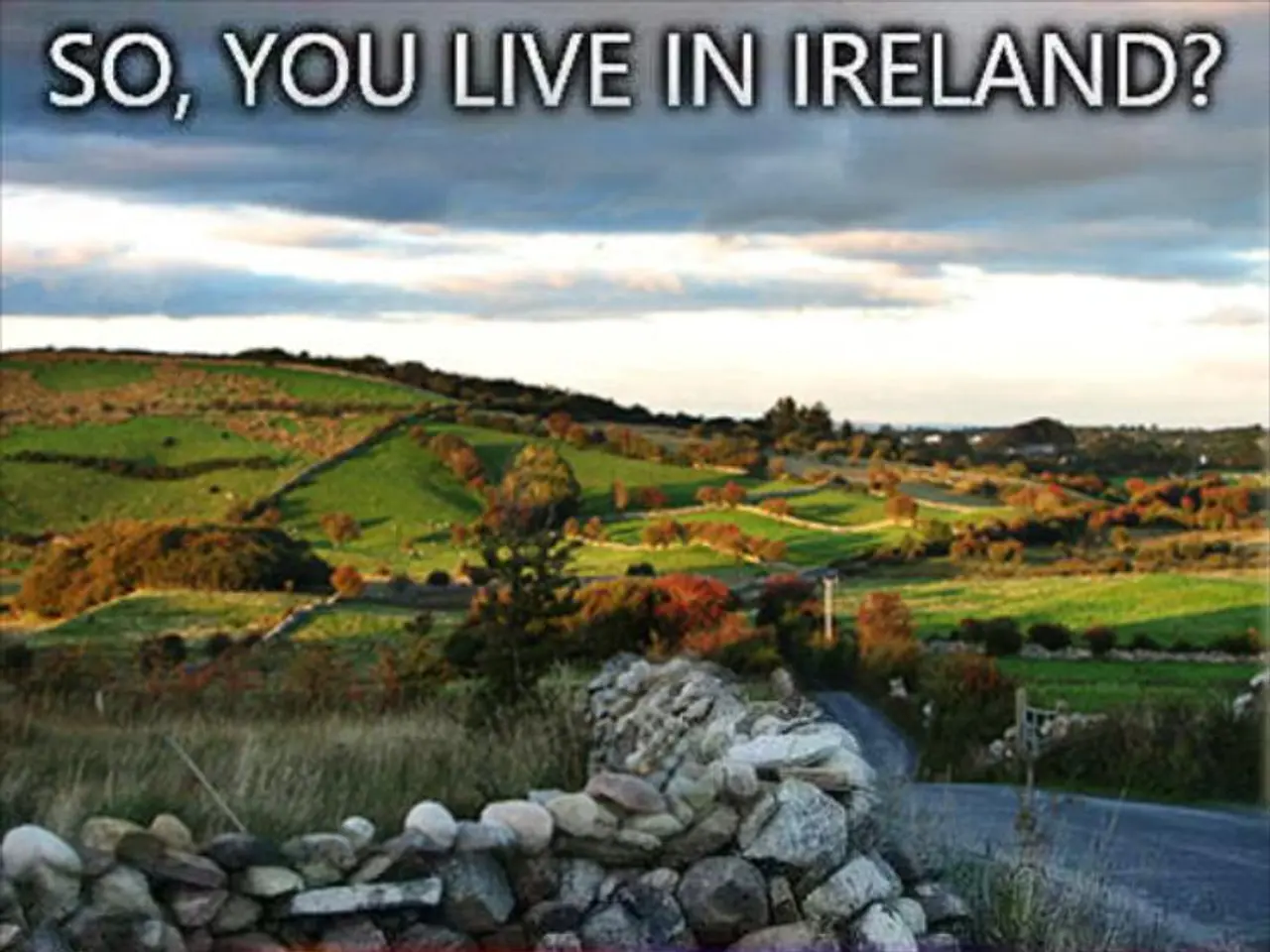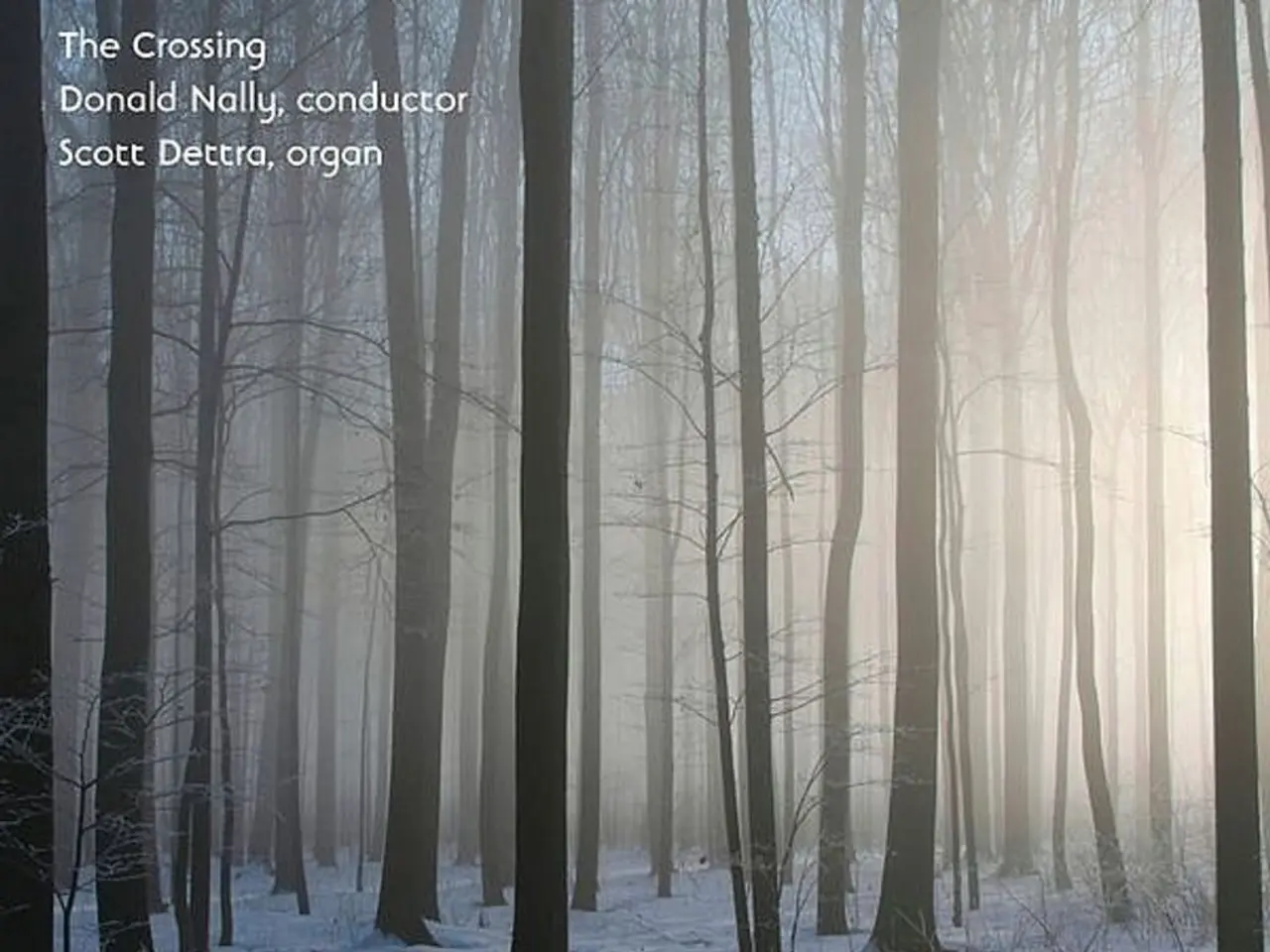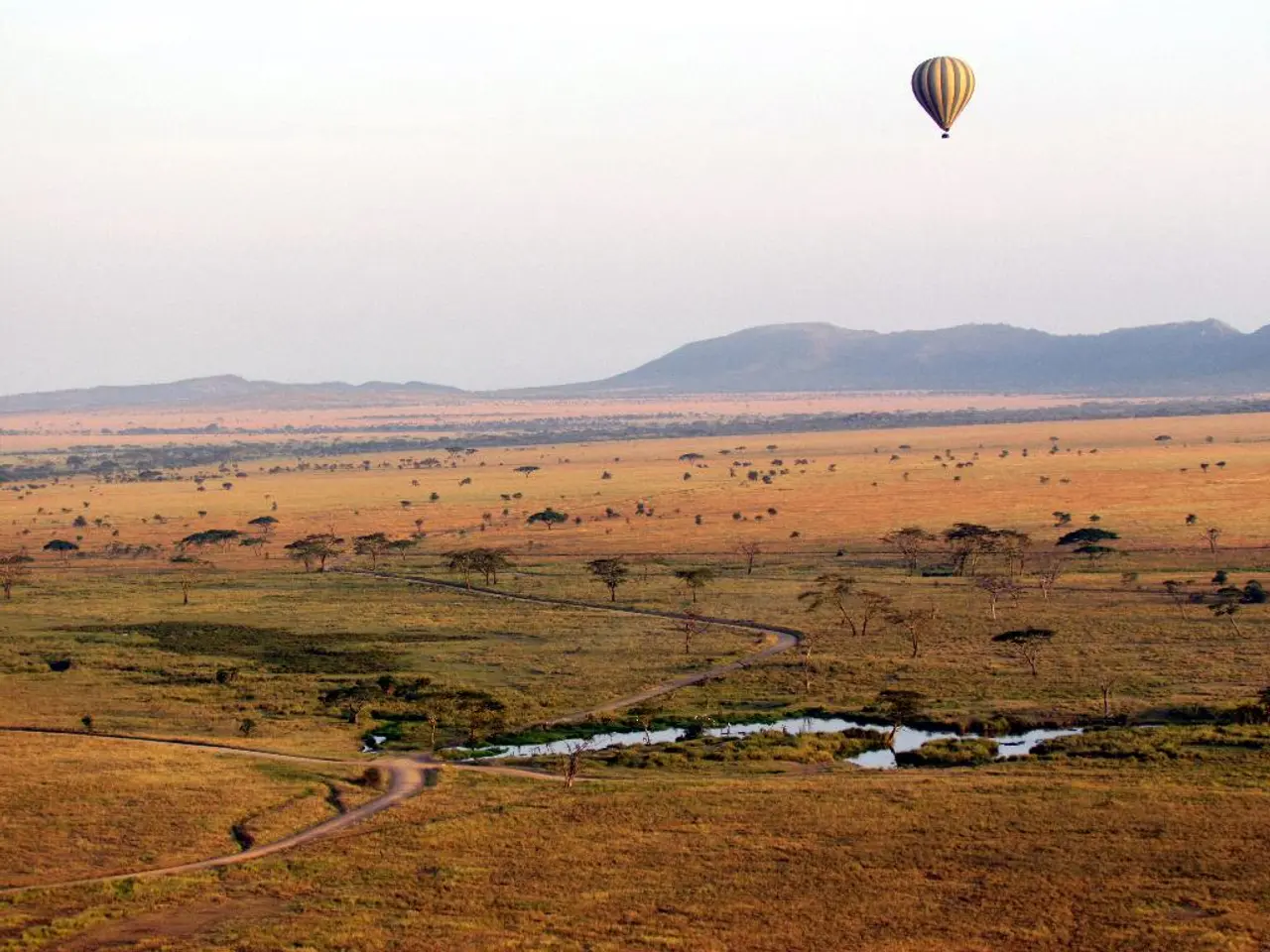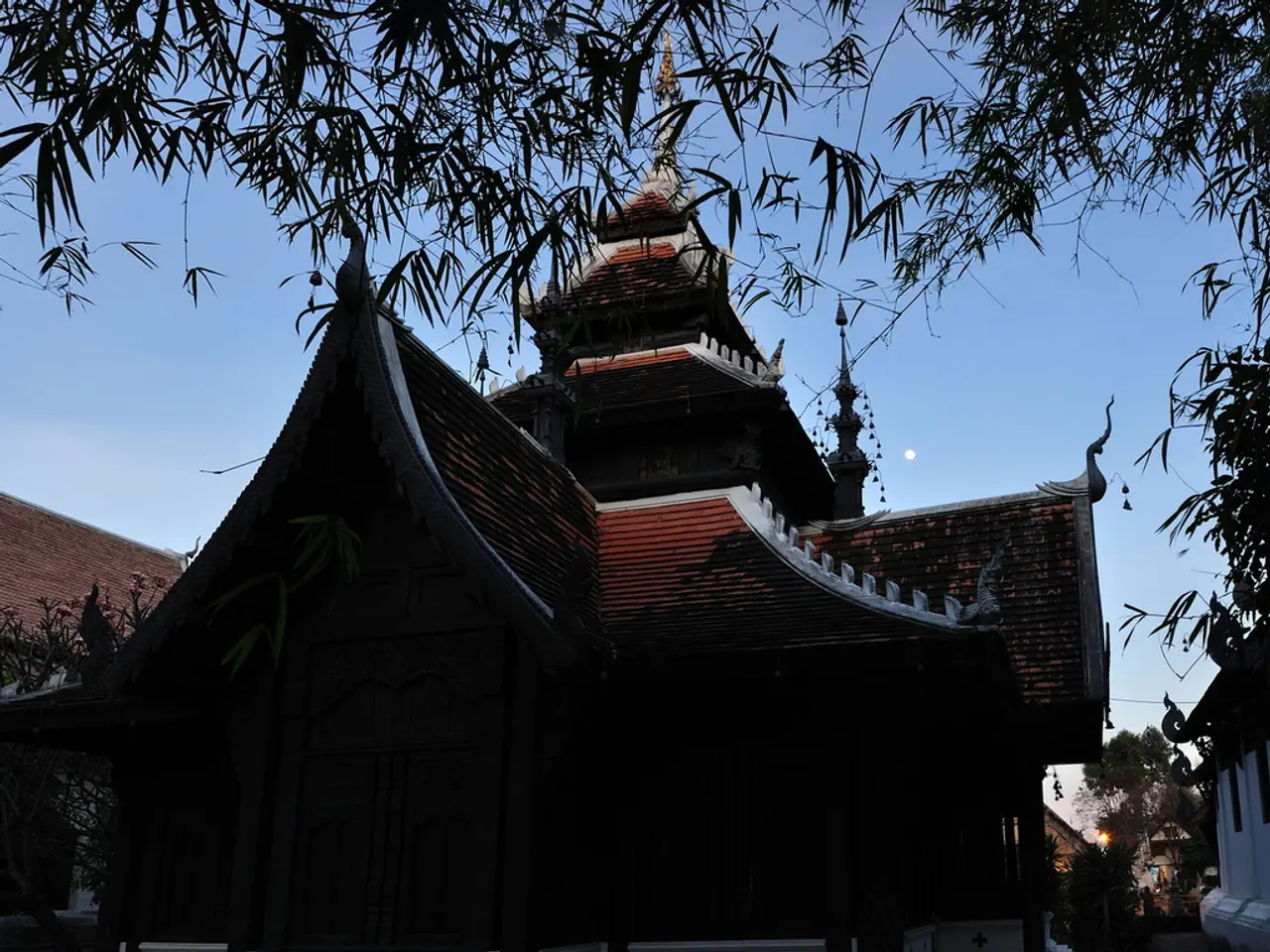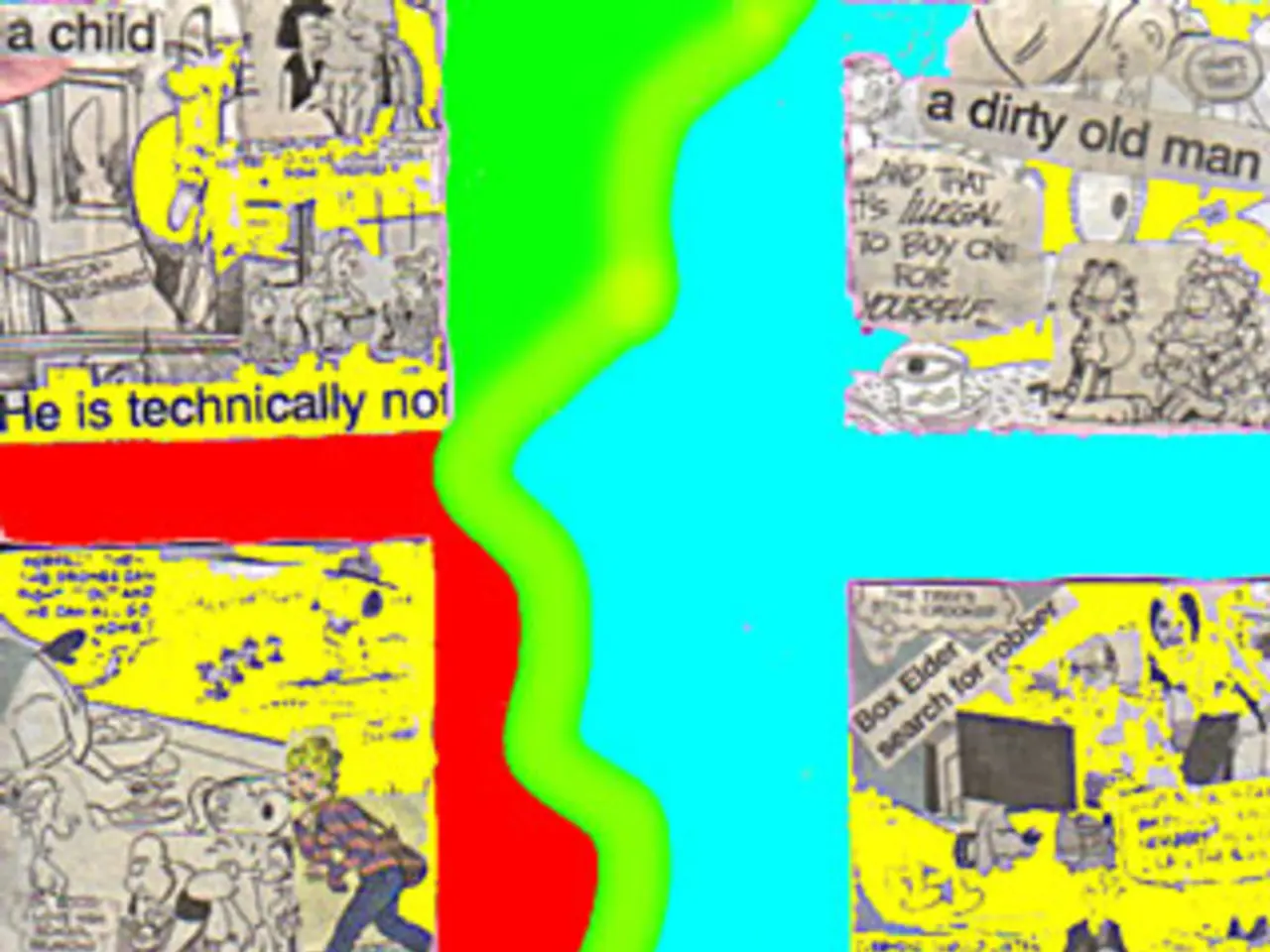Fleeing Californians amidst the inferno and blaze - Wildfires Ravage California: Residents Flee for Safety
In the scorching August heat of 2025, Southern California faced the wrath of two massive wildfires - the Canyon Fire and the Gifford Fire.
The Canyon Fire, which began near Lake Piru in Ventura County, quickly spread into Los Angeles County, consuming approximately 5,370 acres at its peak. The blaze was fueled by extreme temperatures (up to 100°F) and wind gusts reaching 25 mph, accelerating its spread. Over 400 firefighters, helicopters, and fixed-wing aircraft were mobilized to combat the inferno. Thousands of residents were initially evacuated, with an additional 12,000 under evacuation warnings.
The Gifford Fire, located in Santa Barbara County, grew to over 119,000 acres, earning the title of a "megafire." It is currently the largest fire in California for the year. Evacuation orders and warnings affected nearby residents, with an evacuation center established to assist displaced individuals.
The impacts of the Canyon Fire were profound, with thousands forced to evacuate their homes, disruption caused by public safety warnings, and the region straining under the heat and smoke. Emergency declarations facilitated rapid resource deployment and inter-agency coordination to protect lives and infrastructure. Residents were urged to comply promptly with evacuation orders due to the fire’s rapid spread under severe weather conditions.
The cause of the Canyon Fire remains under investigation, as does the cause of the Gifford Fire. In the aftermath of the Canyon Fire, human remains were still found in a burn zone in Altadena as late as July.
In a grim reminder of the devastation that wildfires can bring, the catastrophic scenario from January, where two large fires in parts of Los Angeles left a trail of destruction, is still fresh in the minds of Californians. With strong Santa Ana winds, the flames from the Canyon Fire spread rapidly from the western edge of the metropolis to the beaches of Malibu, illustrating the ongoing wildfire risks in the region exacerbated by weather and vegetation conditions.
In an unusual move, up to 900 prisoners were temporarily deployed in the Los Angeles area to assist the fire department in fighting the fires. Their tasks included creating firebreaks and removing combustible material such as fallen trees.
As the fires continue to rage, the efforts of the firefighters have so far prevented major damage in residential areas. However, the grim toll includes over 16,000 structures burned, with at least 31 fatalities. The flames had scorched an area of about 22 square kilometers.
These events serve as a stark reminder of the ongoing threat of wildfires in California and the importance of vigilance, preparedness, and rapid response in the face of these natural disasters.
- In the realm of environmental science and general news, the catastrophic wildfires in Southern California during the summer of 2025, including the Canyon Fire and the Gifford Fire, are not only a living illustration of the impacts of climate change but also a grim reminder of the ongoing threat of wildfires exacerbated by weather and vegetation conditions.
- The Canyon Fire, sparked in Ventura County and fueled by extreme heat, drought, and wind gusts, demonstrated the critical role of firefighting, escalating the need for science and technology in weather forecasting to manage and contain such disasters more effectively.
- While the authorities investigate the causes of these provincial wildfires, the surveillance of accidents such as forest fires within environmental-science circles becomes increasingly essential for improving prevention and response strategies in the USA and beyond.
- In response to the escalating risks and devastation caused by wildfires, future discussions in crime and justice forums may shift towards putting a greater emphasis on rehabilitative measures for prisoner deployment in disaster zones like Los Angeles, potentially aiding in the prevention and containment of wildfires through their labor in creating firebreaks and removing combustible materials.
